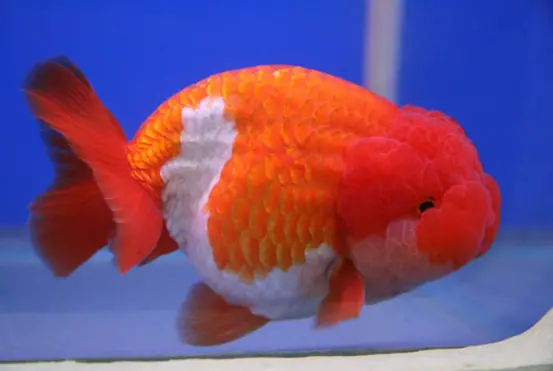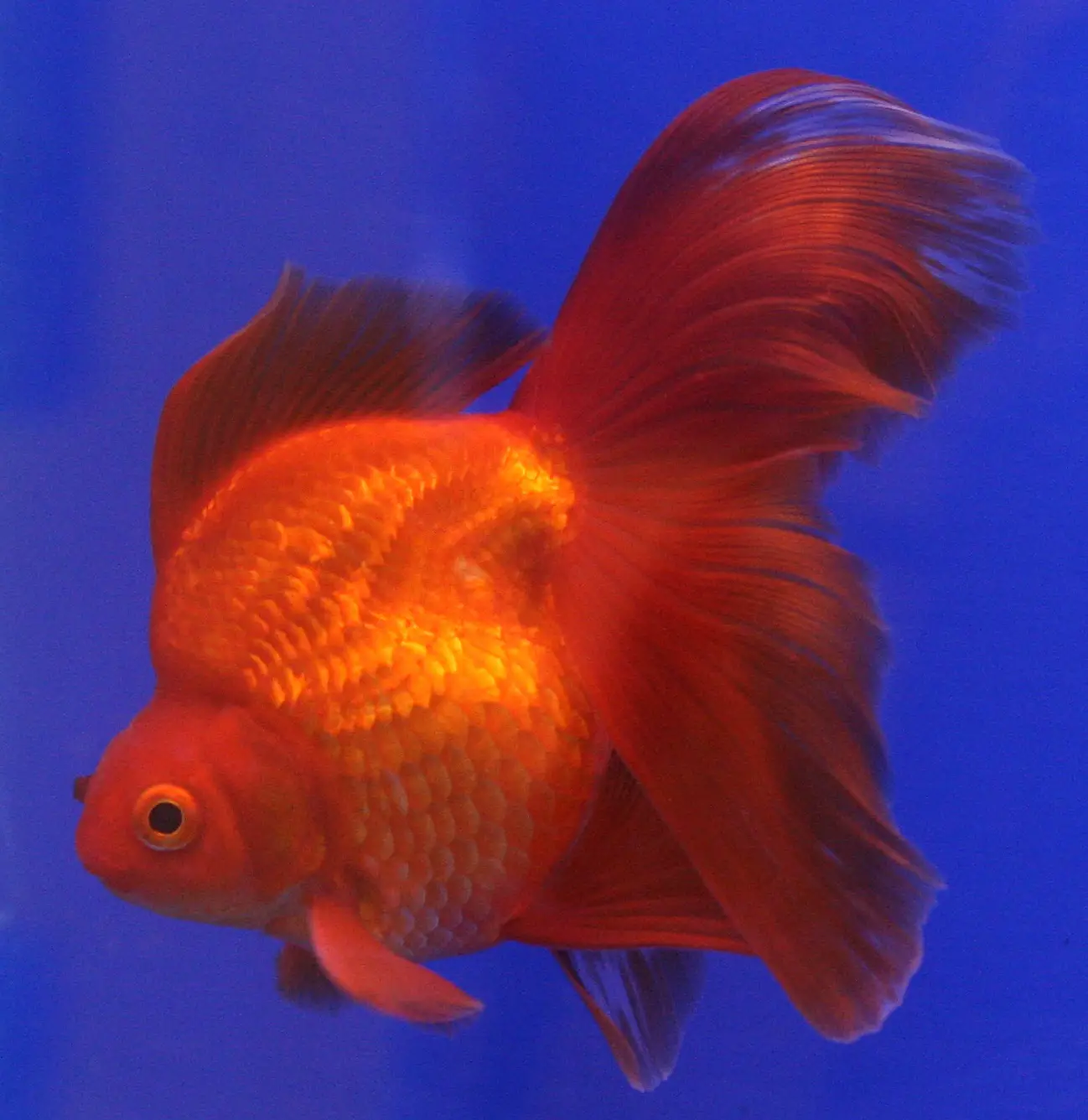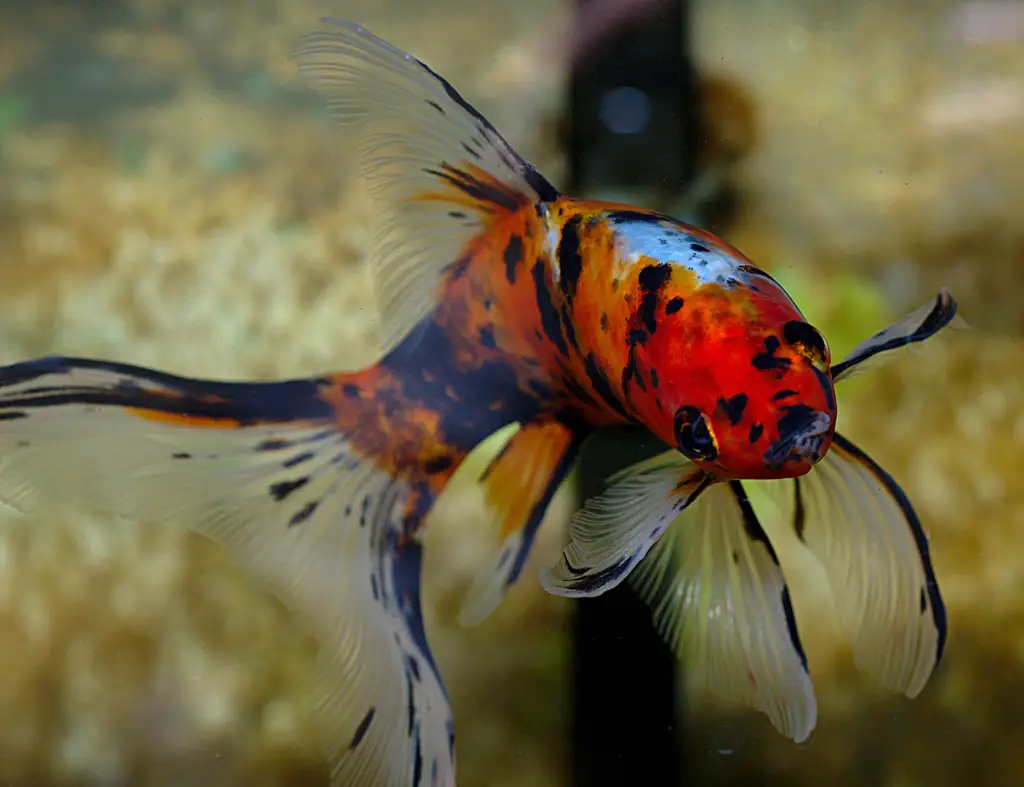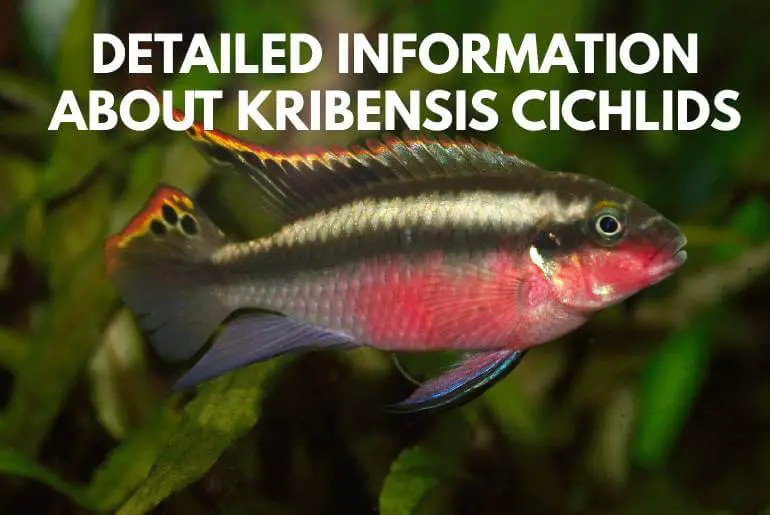Goldfish, (Carassius auratus), are one of the most common, widespread, inexpensive fish that are readily available in any aquatic pet store. Goldfish come in various shape, size, fin styles with bright colour, there are more than 125 breeds of goldfish, including the common goldfish, pet-shop comet; the veiltail, with a three-lobed and flowing tail; the lion head with a swollen “hood” on the head; and the celestial with protruding and upward-directed eyes. Goldfish are messy creatures they can grow quite large if given the right conditions This is the reason you need excellent goldfish care. The colour of goldfish makes human mind feel relaxed and stress-free and makes life healthier this is the reason you see goldfish at your workplace and hospitals.
How to Take Care of your new Goldfish?
A lot of people especially beginners, get influenced with keeping goldfish in a bowel from movies or television commercials. They think that goldfish can be kept and will survive in such a small unfiltered container. It’s one of the biggest mistake beginner goldfish keepers make. It is very sad to see a goldfish in that condition. Seeing them being treated inhumanly hurts my feelings a lot. Goldfish are not a piece of decoration to your house, you should treat your fish as one of your family members.
I admire people who come to my store and ask me tips to take care of goldfish before purchasing one, at least they are trying to learn new things. Taking care of goldfish is rather simple as long as you provide them with right aquarium size with correct aquarium parameter as they required, proper temperature, proper filtration, feed them quality and variation in foods, and do water changes to maintain healthy aquarium nitrogen cycle, what next? That’s all you need to keep a goldfish happy.
If you’ve thought about keeping goldfish as your pet, congrats you’ve made a great choice. Goldfish make a great pet for aquatic enthusiasts as well as a beginner. Goldfish are one of the most common, readily available, and inexpensive fish you can purchase. If you’re looking to set up a breeding tank for breeding goldfish or have one as a pet, or if you are curious about how it could be; then you are at the right place. Here are instructions on how to take care of goldfish and make them happy and healthy for years, and maybe decades, to come!
Goldfish Characteristics
Scientific name: Carassius auratus
Origin: East Asia
Lifespan: Average Lifespan 10 years.
Size: 4 inch (10.16 cm)
Temperature: 23°C/74°F
pH: 7.2 – 7.6 range
Fish Types: Ryukin, Oranda, Shubunkin, Ranchu, Black Telescope, Bubble Eye, Lionhead, Pearlscale, Veiltail, Red Cap Oranda, and so on.
Aquarium Size: 40 to 55 gallons
Tank Mates: Many, with peaceful nature.
Gender: Male, Female
Brief introduction of things you need to consider keeping a goldfish
Talking about space and environment, goldfish prefer clean water with slow-moving texture. They also desire for a thick and muddy surface. Goldfish need big space to survive rather than in a tropical aquarium. A goldfish required of 40 to 55 gallons tank if you want more consider upgrading your tank. The basic calculation is 24 square inch of water surface area per inch of fish. When selecting an area in your home to keep your aquarium, it’s necessary to think about all the angles. First, you should not keep your tank near any air conditioners or heat sources i.e. not placing an aquarium in a spot where the temperature fluctuates. You will want your aquarium away from windows, since ambient light cause algae growth if too bright.
Here are some of the most common beginner mistakes.
Steps to Care for a Goldfish (Includes Tank Setup)
Where to Keep a Goldfish: Getting a tank
Don’t get confused with the cute little-sized goldfish you see in your pet store. Goldfish are actually one of the largest species, they can grow to about 12-18 inches in length. The minimum tank size for a single goldfish is 20-30 US gallons (75.7 liters) and for each additional goldfish, you need to increase your tank volume by 10-Gallon. If you cannot afford to buy a big aquarium, then this fish is not for you. Instead go for small fish like Neon Tetras, Glowlight Tetras, Guppies, Mollies, Swordtail, and many more.
Here are the things you need to consider getting a goldfish tank or bowl
- Goldfish are messy fish; therefore you will have to do a frequent water change, so buying a small aquarium or a bow is out of option, it’s like suffocating your fish in a small container.
- The majority of fishbowl are small in size; you won’t be able to add all your equipment like heater and filter to the bow.
- Another drawback of a bowl is that it’s rounded; therefore it won’t provide enough surface area for adequate gas exchange, making the water more toxic for your fish.
- Don’t place your aquarium near any heat source like air conditioners, or fire pit or any spot where the temperature can change.
- You will need to avoid placing your aquarium near the window because sunlight tends to grow algae in your tank.
- If you have children or pets, choose a place that is out of their reach.
Get a right gravel
There is a variety of aquarium substrate you can choose for your tropical aquarium setup. But for a goldfish, you either have to use large rocks or very small gravels because goldfish like to dig up gravels in search for food that has fallen to the bottom of the tank.
Any gravel you buy contains an impurity, so you will have to rinse off the impurity with water. A better option would be soaking gravels in a little water for a day or throughout the night. This will extract some of the impurities from the gravel. Next day you will have to wash off the dirt from the gravel, else your tank will be cloudy and you wouldn’t like that. Make sure you don’t use any soap to wash the gravel.
Adding decorations and lights
Lightings will play a significant role in your tank; it’s one of the essential elements for your community aquarium. Without adequate lightings, plants in your aquarium won’t survive, as a plant needs a light source for photosynthesis, and fish won’t be at its peak health, they will be dull all the time. Lights also help to bring out the colour of the fish to its fullest. Good lighting will help you to see all the activities that go on in an aquarium.
- Though goldfish does not require light to survive, they will appreciate about 8-12 hours each day. Lights will help you see your fish better and in their natural colouring. Never place your tank in straight sunlight, as this could lead to temperature instabilities and contribute to the uncontrolled development of algae.
- For decorating your tank, placing a central piece of wood or rock with some artificial vegetation in your aquarium is a great choice. The rock or wood will give a natural look to your aquarium and will provide goldfish with a great place to explore.
- As far as plants go, you can choose any plants from artificial plants to real plants. Real plants are beneficial for the nitrogen cycle process because they help absorb some of the nitrates that accumulate in the aquarium due to aquarium nitrogen cycle and provide pure oxygen to breathe. However, goldfish are omnivores and voracious eaters. Stay with artificial plants or avoid small plants like dwarf hair grass until you have the time and resources to keep the actual plants safe from the hungry fish.
Rig up the water filter
A goldfish tank must have a water filter. As goldfish produce a lot of waste, an aquarium filter will help break down those waste, remove odours, trap large particles like dead plant matters, uneaten foods, etc. A water filter must have three stages: Mechanical Media, to remove large particles such as fish waste otherwise excess food; A Chemical Media, to eliminate smells, stains and other biological mixtures; and A Biological Media, to break down fish waste and ammonia with beneficial bacteria.
Filters help you to keep your water quality good in shape for a long time. Still, you need to perform some level of water change to eliminate toxins that the filter failed to eliminate. Is it a good choice to get bigger aquarium filters. Here are some of the aquarium filters you can choose. Or you can add a sump filter to your aquarium system. Read more about aquarium sump from my previous article “Aquarium sump filter”.
Here are three best filters you can choose for your goldfish tank.
- A Hang on back filters (HOB), which hangs on the edge of your tank, and carry water and filter the water. They are prevalent filtration system that you can get at a reasonable price, and probably give you the highest return for your money.
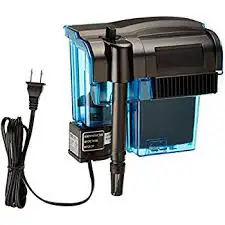
- Canister filters sit under your aquarium and use a series of tubes to filter the water in and out. Canister filters tend to be almost silent, are a bit more expensive than HOB filters, but are more efficient in filtering than HOBs. Canister filters are also usually manufactured for tanks over 50 gallons (approximately 189 litres).
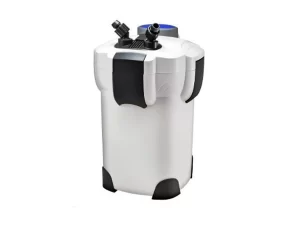
- The best filter “The Sump System”. Sump is my favourite method of the filtration system as they are customizable. Like a canister filter, a sump system is also placed below the tank where many baffles are used to direct water through various chambers containing different filtration media. I have talked about the sump system in my previous article here is the link if you want to learn more about this type of filter Freshwater Sump FIlter.
Basic Sump Filter
What about the water for your goldfish?
When you are setting up your new aquarium for your goldfish, add tap water to your tank and de-chlorinate the tank water. You can also add a little bit of aquarium salt to your tank water. To treat your tank water you can use products like :
API STRESS COAT Aquarium Water Conditioner,
Tetra AquaSafe Plus Water Conditioner/Dechlorinator,
Professional Aquarium Water Conditioning Dechlorinator,
Tetra Water Clarifier Aquarium Treatment Solution
It is important not to add your fish to untreated water, as choline and other pollutants can kill your fish.so cycling the tank is a must read further to learn about the nitrogen cycle. Goldfish prefer slightly cooler water. They require a temperature between 65 and 68 degrees Fahrenheit to thrive. Add a heater to your tank to maintain the water temperature.
Aquarium Nitrogen Cycle
Aquarium nitrogen cycle is a process of breaking down of toxic into less harmful form. i.e. ammonia into nitrite and nitrite into nitrate.
If you want to learn more about nitrogen cycle here is the link.
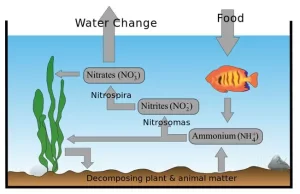
For the cycling process, I prefer the fishless cycle, which involves adding ammonia as a food source for beneficial bacteria to start the cycle.
Before adding your fish, you must make sure that the environment is ready to fish. Test your aquarium water for its hardness, ammonia, nitrite and nitrate levels in the tank. You want zero ammonia, zero nitrites and less than 20 ppm of nitrate as a final result. The test tiles can be hard to use and are more expensive, therefore you should buy a liquid test kit like the Master Test Kit. Which contains all the test kits and will make your life easier.
Adding your first fish
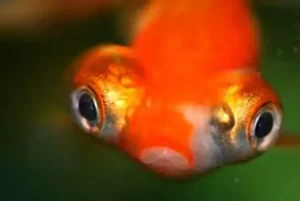
Now that your tank is set up correctly, you can purchase a new goldfish for your tank. The first thing you need to do is acclimate your fish. Here are the steps to acclimate your goldfish.
- Float the packet in your tank for 20 minutes to match the temperature from the aquarium.
- Open the bag, gently scoop the fish and transfer the fish to the main tank. (do not add the water from the bag, who knows what it contains)
When adding your goldfish to a community tank, you need to make sure that the fish in your tank requires similar water parameter as goldfish.
Feeding for Goldfish
Goldfish are omnivorous, eats anything that fits in their mouth. The primary source of food in the wild for a goldfish is mosquito larva, aquatic plants, fish eggs, insects, and even some small fish. As a pet goldfish, you need to provide them with a variety of food including brine shrimps, bloodworms, food flakes, food pallets etc. Goldfish need variety in their diet, their need for food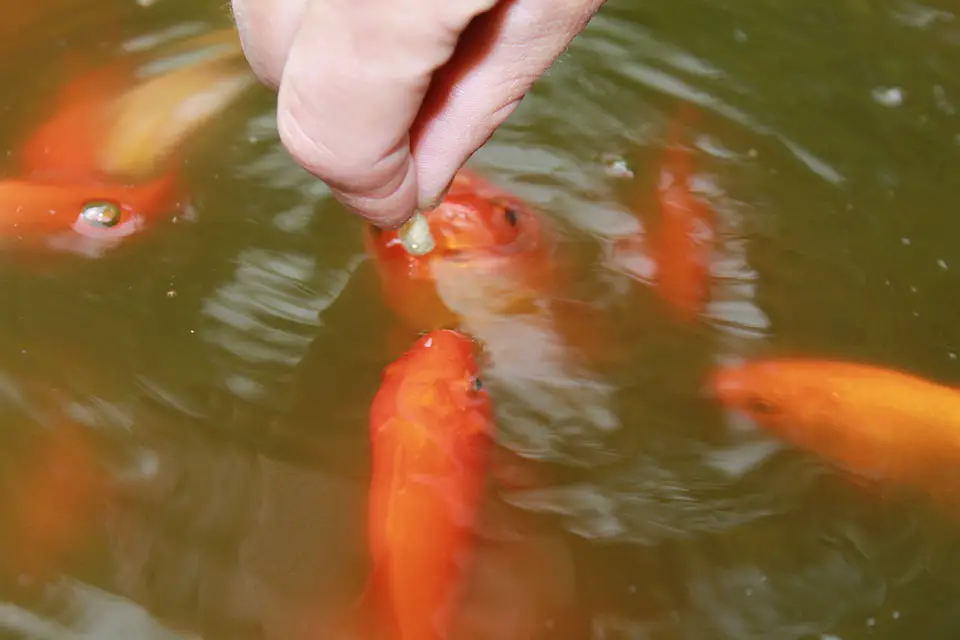 change as they get older. Fry and juvenile goldfish need a high protein diet for their growth, while adult needs more of carbs, i.e. plants material in their diet.
change as they get older. Fry and juvenile goldfish need a high protein diet for their growth, while adult needs more of carbs, i.e. plants material in their diet.
The fancier goldfish variety you are keeping, the more important is to give them a balanced diet. Flaked food or pelleted fish food formulated especially for goldfish should be given to your pet goldfish, and flakes can start losing its nutrition value as soon as you open the food container. Whereas, pallets hold their nutrition value for a very long time. Once in a while, you can feed your goldfish with boiled vegetables, shrimps and bloodworms. Try to feed your goldfish freeze-dried dried food opposed to live-food because live food can transfer disease.
All fish food is not created equally, different food has different formula as fish require, so try purchasing foods that are specifically made for goldfish. Here are some of the food I prefer:
1. Omega One Medium Sinking Goldfish Pellet Fish Food
2. Hikari Gold Gold Fish Food
3. Repashy Super Gold Goldfish and Koi Gel Food 6 Oz JA
4. TetraFin Goldfish Flakes, Balanced Diet Fish Food
5. Hikari 12.3-Ounce Lionhead Sinking Pellets for Pets, Mini
Be careful not to overfeed your goldfish, just feed them what they can eat in a minute. It is very easy to overfeed goldfish as they keep on eating everything that you provide them. You may not need to feed the goldfish frequently when the water temperature is on the cooler side. Because goldfishes’ metabolism slows down in such condition.
How often to feed your goldfish?
No matter what food you provide, your goldfish is going to eat them all. Goldfish are scavengers, they continuously search for food to eat. And, goldfish can live for two weeks without food, so they are great pets for travellers as well.
Most pet owners make a mistake by overfeeding goldfish; this is harmful to both water and your fish. Small pinch of pallet or food flake twice a day will be sufficient for your goldfish. Think as if, the size of the stomach of your goldfish is equivalent to the size of its both eyes combined. Any food that is uneaten will sink to the bottom of your tank, decomposing and polluting the water. Therefore always remove uneaten food.
Cleaning and water change at least once a week
Although your tank looks clean and clear it isn’t. Goldfish produce a lot of fish waste that even your water filter may not be able to completely remove it from the tank. A clean tank means happy and healthy golden fish. And a happy and healthy goldfish can live for decades!
If you have got a large aquarium equipped with filters, you’ll probably need to do a water change and cleaning of your tank once every three to four weeks. Likewise, for a smaller aquarium frequent water change is required to maintain healthy water parameter. Perform a 30% water change weekly and make a 55% water change every time the nitrates spikes over 25 ppm.
Soap is poisonous to the fish and will kill them quickly, therefore, don’t wash the tank with soap. Also, do not use tap water regularly to add in your tank. Drinking water is not good for you fish because it lacks some of the minerals that are good for goldfish. Buy a water conditioner at a pet store and place the amount it says on the label. Avoid taking fish out of the tank when cleaning it. The use of a gravel vacuum to absorb debris can be done without removing the fish from its habitat.
Maintaining the Tanks Environment: Checking ammonia, nitrate, and ph-level
Do you remember tests you did before adding your precious little fish into the tank? You have to continue testing your aquariums water parameter often! I do mine once a month. The ammonia and nitrite levels should be at 0. A pH range of 6.5-8.25 is fine. The pH level of your pond’s water refers to the measurement of its acidity or alkalinity. If the water in your pond has a pH of 6.5, it is acidic; and if the water measures more than pH 7.5, it is alkaline water.
If you don’t eliminate ammonia and nitrite in your aquarium or pond, it will be deadly for your fish. Even mild levels of ammonia and nitrite will distress your fish because it leaves them open to infection and disease. So, do a weekly water change about 30% of the tank volume. Maintain your tank’s temperature, goldfish requires a temperature between 65 and 68 degrees Fahrenheit. Add a heater depending on your tank size.
Monitor your fish behavior and identify and treat disease problem
Goldfish are living beings, they get sick as any other creature does. Goldfish might get sick when the environment you provide doesn’t match what the fish requires. Fin rot disease, ick, velvet disease, fungal infections are common in goldfish. So look at this article Goldfish Disease and Treatments to diagnose you goldfish with symptoms and treat it right. The sooner you diagnose the disease the easier it will be to treat your fish. So, take a close look at your fish once in a while.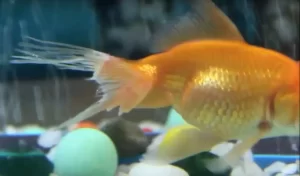
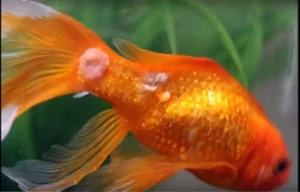
Goldfish Fun Facts
-The fun fact about goldfish is they do not blink. because they have no eyelids and this means they sleep with their eyes open.
-They are also believed to be a lucky fish for couples.
-Goldfish have a very good memory, goldfish have a memory span of at least three months and can recognize people’s face, colours sounds, different shapes etc.
-Goldfish can be trained like other pet animals because they have sense like moving through bushes to get foods and swimming and releasing stuff.
-Mostly other fish in a group are called schooling but a group of goldfish is called “a troubling”.

